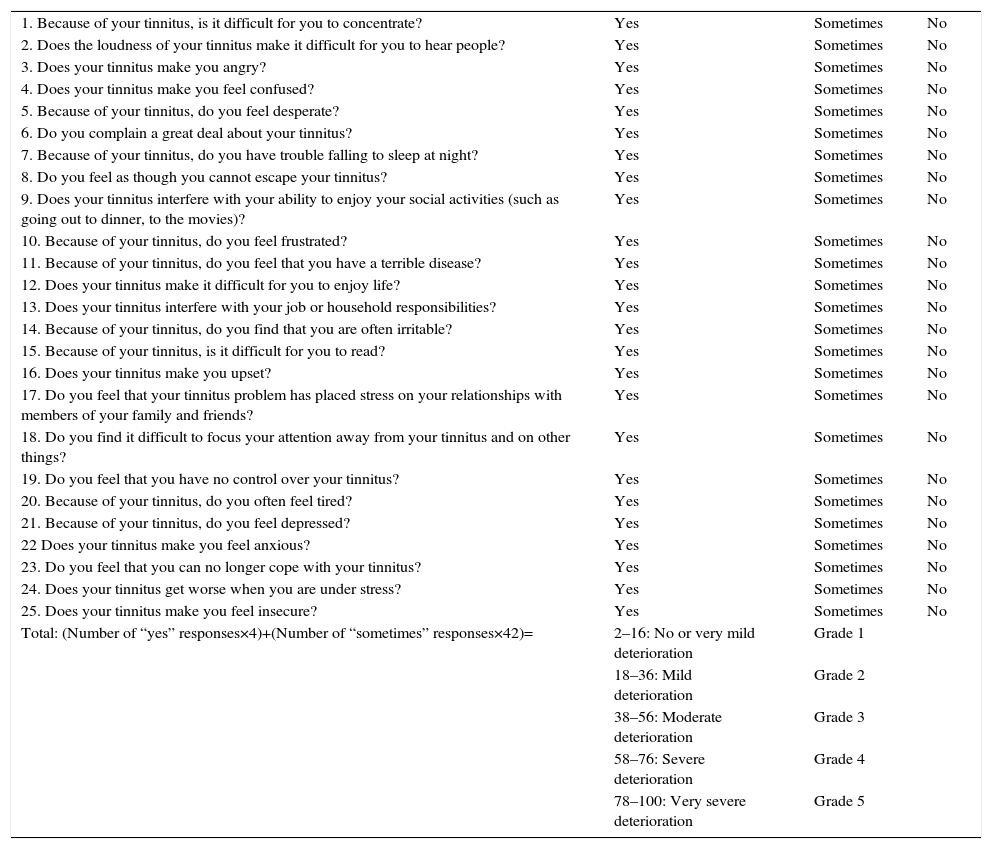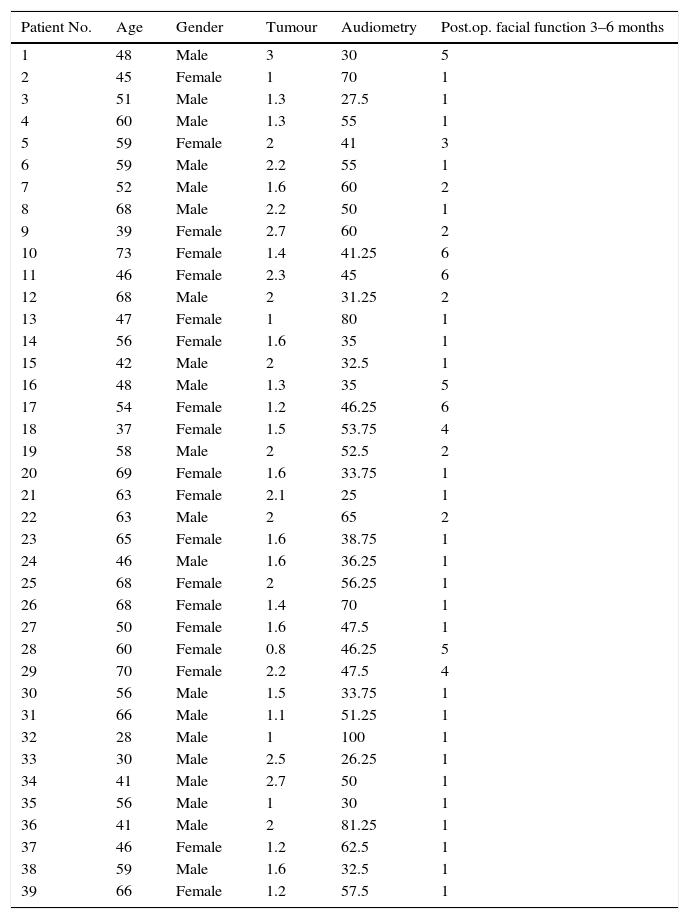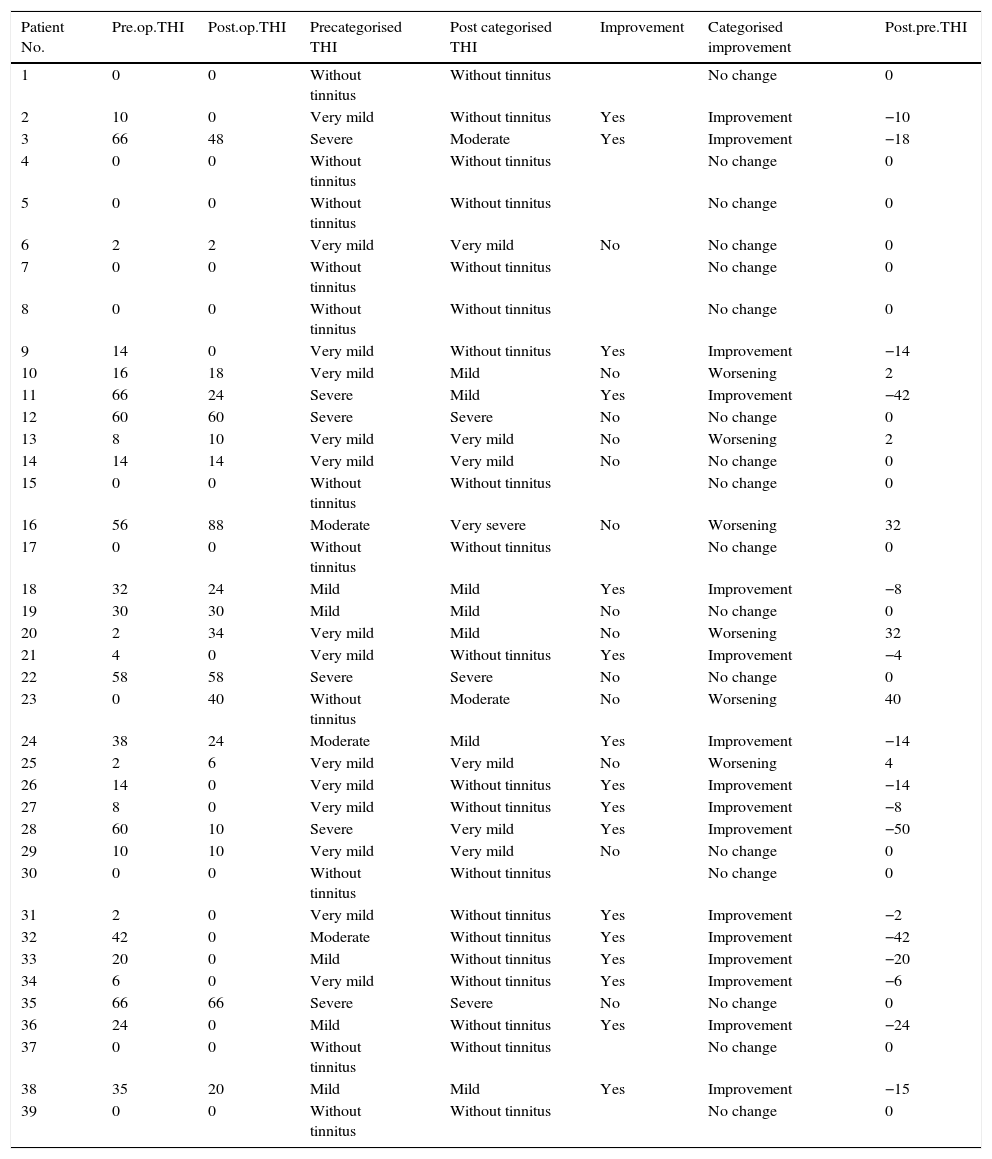Tinnitus is one of the primary symptoms of vestibular schwannoma (VS) and the effect of surgery is unpredictable.
Materials and methodsWe conducted a prospective study of the patients who underwent a translabyrinthine approach for the treatment of their VS (2009–2013) at our Hospital. Patients answered the Tinnitus Handicap Inventory (THI) questionnaire pre- and postoperatively. The clinical charts provided data such as age, gender, tumour size, preoperative audiometry and postoperative facial function.
ResultsThe study included 39 patients. Of these, 71.8% suffered from tinnitus: 50% grade I, 17.9% grade II, 10.7% grade III, 21.4% grade IV and 0% grade V. We found no statistical association between tinnitus and the different variables measured preoperatively. Postoperatively, 48.7% of the patients suffered from tinnitus: 31.6% grade I, 36.8% grade II, 10.5% grade III, 15.8% grade IV and 5.3% grade V. The difference between mean pre- and postoperative THI was statistically significant (P=.011); this difference was greater in younger patients. We have found a significant negative correlation (r=−0.335; P=.037) between preoperative audiometry and postoperative THI.
ConclusionsWe did not find any significant association between tinnitus and age, gender, tumour size and postoperative facial function. Translabyrinthine surgical removal of VS in these patients led to better THI results, with the younger patients having better outcomes. The patients with poorest preoperative audition were the ones that had the best results in the postoperative THI questionnaire.
El acúfeno es uno de los síntomas más prevalentes entre los pacientes afectos de neurinoma del acústico y su evolución tras cirugía es difícilmente predecible.
Material y métodosSe realiza un estudio prospectivo de los pacientes intervenidos por vía translaberíntica en nuestro centro en un período de 4años (2009-2013). Los pacientes contestan al cuestionario de incapacidad del tinnitus (THI). Se recogen de la historia clínica la edad, sexo, tamaño tumoral, audiometría prequirúrgica y función facial postoperatoria.
ResultadosParticiparon en el estudio 39pacientes. El 71,8% de pacientes padecían acúfeno. El 50% de los pacientes presentaban un deterioro muy leve, el 17,9% leve, el 10,7% moderado, el 21,4% severo y el 0% muy severo. No encontramos asociación estadísticamente significativa entre ninguna de las variables estudiadas y el acúfeno preoperatorio. El porcentaje total de pacientes con acúfeno postoperatorio fue del 48,7%. El 31,6% presentaron un deterioro muy leve, el 36,8% leve, el 10,5% moderado, el 15,8% severo y el 5,3% muy severo. La diferencia de medias entre el THI pre y postoperatorio resultó estadísticamente significativa (p=0,011), siendo esta diferencia de mayor magnitud en pacientes jóvenes. Asimismo, existió una correlación negativa y significativa (r=–0,335; p=0,037) entre la audición preoperatoria y el THI postoperatorio.
ConclusionesNo encontramos asociación significativa entre el tinnitus y la edad, sexo, tamaño tumoral y función facial postoperatoria. La exéresis del neurinoma del acústico por vía translaberíntica disminuye la percepción del acúfeno en esta serie, siendo los pacientes que mejoran más jóvenes. Los mejores resultados del THI posquirúrgico los encontramos entre pacientes con peor audición prequirúrgica.













